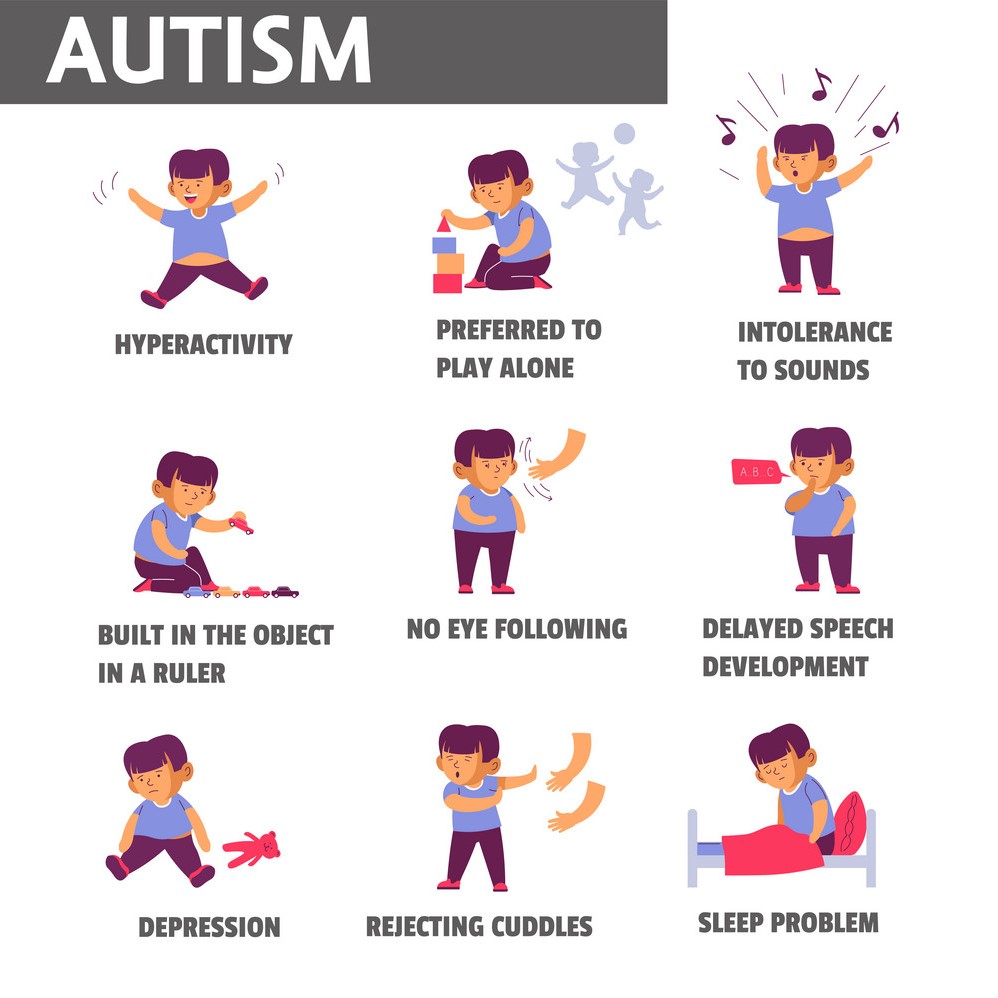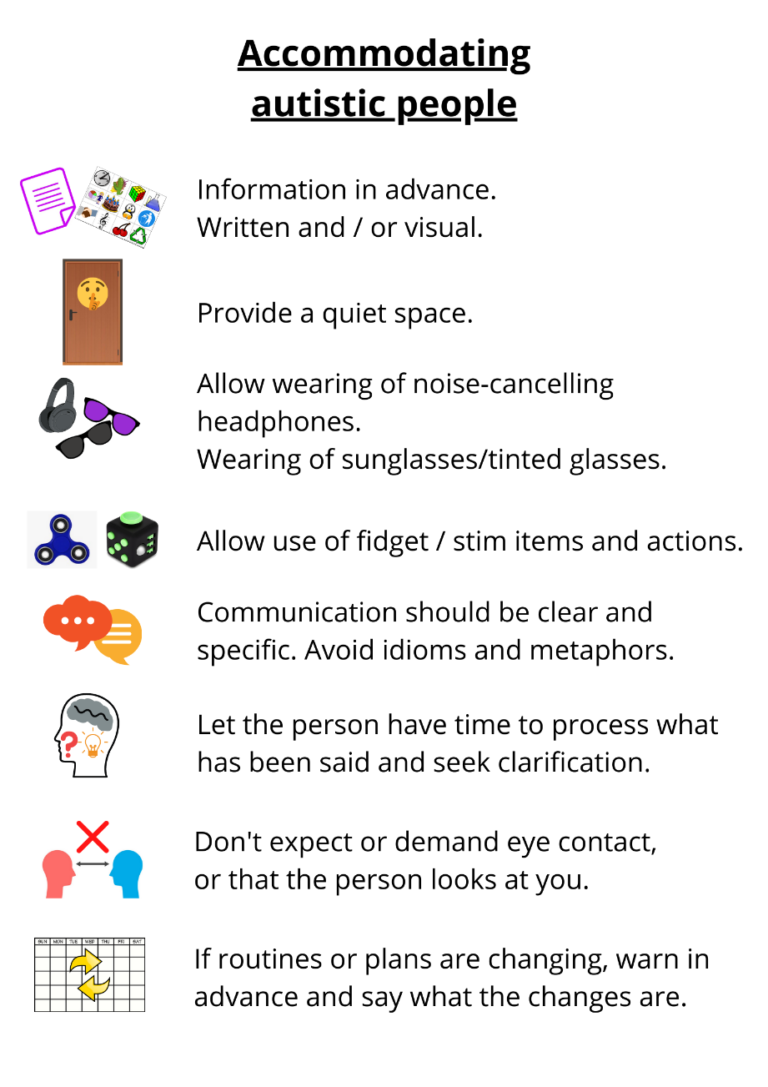Kinds And Levels Of Autism Spectrum Disorder
It leads to serious cognitive and physical disabilities, commonly appearing after a duration of regular advancement. PDD-NOS was the "catch-all" diagnosis for any person that really did not fulfill the DSM-IV criteria and still displayed developing hold-up signs and symptoms and problems. PDD-NOS, together with CDD and Asperger's, was reclassified as ASD to ensure a much more standardized medical diagnosis and standards for liked ones with ASD so they can receive the best possible support. Communication problems are. also a hallmark of Rett disorder, with lots of individuals experiencing a loss of previously obtained language skills.
- Medical care specialists might make use of standardized analyses, observation, and developmental background evaluation to make an exact diagnosis.With each other, we'll additionally check out various communication methods that support those with hearing challenges.These are problems that aren't visible to the nude eye, yet they can considerably influence our abilities and interactions.In exploring the diverse kinds of handicaps, we've strengthened our understanding and empathy.This type of autism can appear particularly squashing for parents as it usually generates complication and fear.Fifth, the security data system does not tape the number of times a child obtained an ASD ICD code at a specific resource.

It made use of to be utilized for people who exhibited some autism attributes, but the unique mix or intensity of those signs really did not meet the full requirements for any kind of particular ASD medical diagnosis. Asperger's Disorder, previously a distinct category within the autism spectrum, is currently incorporated right into the more comprehensive diagnosis of ASD as per the DSM-5. It is among the five types of autism spectrum disorder that has been widely reviewed over the last few years, particularly when it involves grownups with Asperger's. Autism Spectrum Condition (ASD) is a complex condition that has amassed enhancing attention in the last few years. Commonly deemed a singular condition, it is currently identified as a spectrum, including a variety of various sorts of autism. As you have most likely currently seen as a parent of a kid on the range, ASD spectrum highlights the diversity in symptoms and severity, challenging the one-size-fits-all understandings.
An Insight Into The Different Types Of Autism Range Disorder
Level 1 autism, on the various other hand, is when someone calls for some support, but support is just minimally needed. Degree 2 is in between level 1 and level 3 relating to how much support an individual requires in their everyday life. Comprehending the nuances of the 5 kinds of Autism Spectrum Disorder sheds light on the diverse features and obstacles people might face. From Asperger's Disorder to Rett Disorder, each kind offers unique elements that require customized treatments Anthony Hopkins and care methods. Treatment Special education and treatment methods for people with Rett syndrome should be multidisciplinary and customized to their details needs.
Can Level 2 Autism Talk?
While physical health often takes center stage, mental health and wellness is just as important to our general well-being. Living with mental health and wellness conditions can profoundly affect our lives, partnerships, and capacity to operate. They affect our feelings, ideas, and habits, commonly needing expert assistance to handle properly. From some groups of autism that consist of extreme challenges to different kinds of high-functioning autism, each person's experience is distinct. As our comprehension of autism advances, so does our technique to care and support, enhancing the value of seeing each person past just their diagnosis.
Intellectual Impairments
Nevertheless, scientists have actually determined a certain genetic anomaly as the source of Rett Disorder, making it a distinct neurological problem. While there might be overlapping characteristics, Rett Syndrome is no more considered a type of autism. Stats from the Centers for Disease Control and Avoidance (CDC) show that approximately 1 in 54 youngsters in the United States get an ASD medical diagnosis. Signs of ASD often show up in early youth and can influence daily functioning. Autism Spectrum Condition (ASD) is a complicated neurodevelopmental condition influencing how individuals interact and engage with the world.
ALDs consist of listening to help, which intensify sound, and individual amplifiers, which serve in one-on-one discussions. A few of us could take advantage of FM systems, which aid in noisy atmospheres by sending audio straight to our ears. Call toll-free in B.C., 8-1-1, or for the deaf and difficult of hearing to get individualized assistance.
You can determine this type of autism by observing the youngster and noting what location the youngster displays a deficiency in, such as connecting with others. PDD-NOS is often referred to as "subthreshold autism," as it is a term made use of to define an individual that has some yet not all symptoms of autism. The idea of an autism range stands for a standard shift in exactly how we view and approach autism. Rather than unique groups, autism is currently comprehended as a continuum of neurodevelopmental problems. This range model recognizes the substantial variability in symptoms and extent amongst people with autism.Degree 1 individuals might fight with social interactions and show some stringent behaviors yet can operate fairly individually. Level 2 individuals have much more noticeable difficulties in spoken and nonverbal communication and might have more inflexible habits. Level 3 individuals have severe difficulties in social interaction and very inflexible actions that considerably hinder day-to-day functioning. This mouthful of a medical diagnosis included most youngsters whose autism was much more serious than Asperger's disorder, yet not as serious as autistic condition. Kids with this sort of autism may have experienced delays in benchmarks, such as speaking or walking, and frequently hang back various other youngsters who get on speed to hit their developing turning points.
